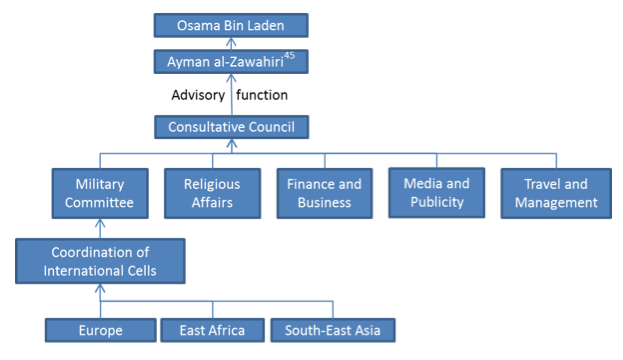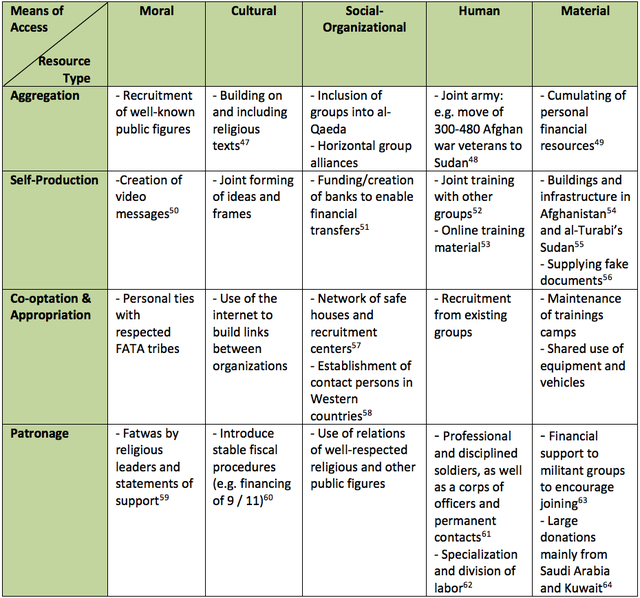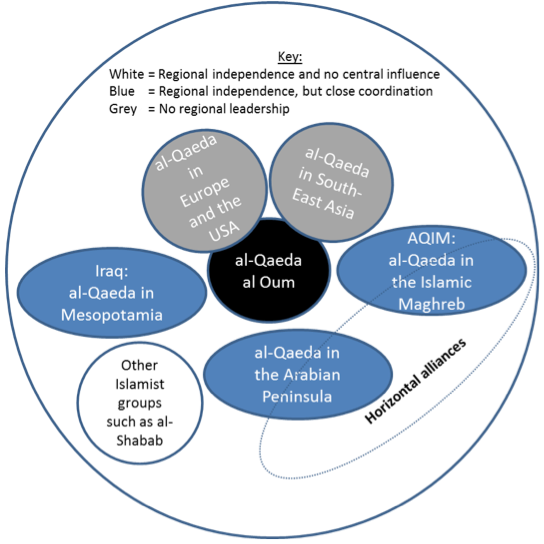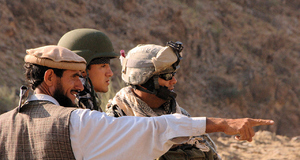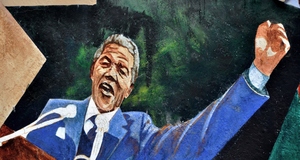al-Amriki, Azzam. Azzam al-Amriki Address to People of America (22 October 2004).
al-Hasan (Atiyya), Mahmud, and Abu Yahya al-Libi. "SOCOM-2012-0000007-HT." Combating Terrorism Center at West Point. 3 December 2010. http://s3.amazonaws.com/CTCReports/English.zip (accessed November 15, 2012).
Aljazeera. aljazeera.com. 29 November 2012. http://www.youtube.com/watch?v=iPobF3hFfXs&feature=youtube_gdata_player (accessed November 29, 2012).
al-Zawahiri, Ayman. "Letter from al-Zawahiri to al-Zarqawi." Global Security. 09 July 2005. http://www.globalsecurity.org/security/library/report/2005/zawahiri-zarqawi-letter_9jul2005.htm (accessed December 04, 2012).
American al-Qaeida spokesman Adam Gadahn. "SOCOM-2012-0000004-HT." Combating Terrorism Center at West Point. late January 2011. http://s3.amazonaws.com/CTCReports/English.zip (accessed November 15, 2012).
Bakker, Edwin. "Characteristics of Jihadi Terrorists in Europe (2001-2009)." In Jihadi Terrorism and the Radicalisation Challenge: European and American Experiences, edited by Rik Coolsaet, 131-144. Farnham Surrey: Ashgate Publishing Limited, 2011.
Barnes, Harry Elmer. History and Social Intelligence. Manufactured in the United States of America: Alfred A. Knopf, Inc., 1926.
Bayat, Asaf. "Islamism and Social Movement Theory." Third World Quarterly, 2005: 891-908.
Bergen, Peter. Holy War, Inc. – Inside the Secret World of Osama Bin Laden. Carmichael, CA: Touchstone Books, 2001.
Bin Laden, Osama, interview by Tayseer Allouni. "A Discussion on the New Crusader Wars." http://www.islamicawakening.com/viewarticle.php?articleID=977&pageID=64. (21 October 2001).
—. "SOCOM-2012-0000016." Combating Terrorism Center at West Point. unknown date. http://s3.amazonaws.com/CTCReports/English.zip (accessed November 15, 2012).
—. "SOCOM-2012-0000019-HT." Combating Terrorism Center at West Point. late May 2010. http://s3.amazonaws.com/CTCReports/English.zip (accessed November 15, 2012).
Bin Laden, Osama translated by Al Jazeera. 'Reciprocal Treatment Is Part Of Justice', Offer of Truce to European Governments (15 April 2004).
Bin Laden, Osama. 'We Have Already Answered You', Offer of Truce to the American People (19 January 2006).
Bin Laden, Osama. Your Security Is In Your Hands (29 October 2004).
Canetti, Elias. Crowds and Power. Translated by Carol Stewart. New York City: Viking, 1963.
CIA. "CIA Bio Scetch: Usama Bin Laden: Islamic Extremist Financier." The National Security Archive. 1996. http://www.gwu.edu/~nsarchiv/NSAEBB/NSAEBB343/index.htm (accessed November 08, 2012).
CIA Classified. "Sunni Terrorist Threat Growing." The National Security Archive. 6 February 2001. https://www.documentcloud.org/documents/368971-2001-02-06-sunni-terrorist-threat-growing-senior.html (accessed November 28, 2012).
Classified, CIA. "11 September: The Plot and the Plotters." The National Security Archive. 1 June 2003. https://www.documentcloud.org/documents/368989-2003-06-01-11-september-the-plot-and-the.html (accessed November 15, 2012).
Diani, Mario. "The concept of social movement." The Sociological Review, 1992: 1-25.
Edwards, Bob, and John D. McCarthy. "Resources and Social Movement Mobilization." In The Blackwell Companion to Social Movements, by David A. Snow, Sarah A. Soule and Hanspeter Kriesi, 116-152. Malden, MA: Blackwell Publishing Ltd, 2004.
Eschle, Catherine. Global democracy, social movements, and feminism. Boulder: Westview Press, 2001.
EurActiv. EurActiv.com. 03 February 2011. http://www.euractiv.com/east-mediterranean/morocco-warns-bigger-risks-maghr-news-501849 (accessed November 21, 2012).
—. EurActiv.com. 15 March 2012. http://www.euractiv.com/global-europe/eu-consider-security-training-mi-news-511521 (accessed November 21, 2012).
Farrall, Leah. "How al Qaeda Works: What the Orgaination's Subsidiaries Say About Its Strength." Foreign Affairs, March/April 2011: 128-138.
Fattah, Hassan M. New York Times. 20 January 2006. http://www.nytimes.com/2006/01/20/international/middleeast/20tape.html?pagewanted=all (accessed November 20, 2012).
Goffman, Erving. Frame Analysis: An Essay on the Organization of Experience. Boston: Northeastern University Press, 1986.
Gurr, Tedd Robert. Why men rebel. Princeton, NJ: Princeton University Press, 1971.
Hafez, Mohammed M. Why Muslims Rebel. Repression and Resistance in the Islamic World. London: Lynne Rienner Publishers, 2003.
Hoffman, Bruce. "Holy Terror: The Implications Of Terrorism Motivated By A Religious Imperative." RAND Corporation. 1993. http://www.rand.org/pubs/papers/2007/P7834.pdf (accessed November 24, 2012).
IntelCenter. "Osama bin Laden Message Analysis & Threat Assessment (Osama bin Laden-MATA), v1.1." intelcenter.com. 8 November 2004. http://www.intelcenter.com/Osama bin LadenMATA-PUB-v1-1.pdf (accessed November 29, 2012).
Kurzman, Charles. "Social Movement Theory and Islamic Studies." In Islamic Activism: A Social Movement Theory Approach, by Quintan Wiktorowicz, 289-303. Bloomington: Indiana University Press, 2003.
Lahoud, Nelly. "Beware of Imitators: al-Qa'ida trough the lense of its Confidential Secretary." Combatting Terrorism Center at West Point. 4 June 2012. http://www.ctc.usma.edu/posts/beware-of-imitators-al-qaida-through-the-lens-of-its-confidential-secretary (accessed November 29, 2012).
Lawrence, Bruce B. "The Late Shaikh Osama bin Laden: A Religious Profile of al-Qaeda's Deceased Poster Child." The Muslim World, July 2011: 374-389.
Lianos, Michalis. Conflict as Change. MICROCON Research Working Paper 66, Brighton: MICROCON, 2012.
Lianos, Michalis. Conflict as Closure. MICROCON Research Working Paper 52, Brighton: MICROCON, 2011.
Lichtblau, Eric, and Eric Schmitt. NYT. 5 December 2010. http://www.nytimes.com/2010/12/06/world/middleeast/06wikileaks-financing.html?_r=0 (accessed November 28, 2012).
McCants, William. Foreign Affairs. 30 August 2011. http://www.foreignaffairs.com/articles/68236/william-mccants/al-qaeda-after-atiyya (accessed November 21, 2012).
Melucci, Alberto. Nomads of the Present: Social Movements and Individual Needs in Contemporary Society. Philadelphia: Temple University Press, 1989.
Mohamedou, Mohammad-Mahmoud Ould. "The Rise and Fall of Al Qaeda: Lessons in Post-September 11 Transnational Terrorism." Geneva Centre for Security Policy Geneva Papers - Research Series no 3. September 2011. http://www.gcsp.ch/content/download/6379/59187/download (accessed November 15, 2012).
—. Understanding Al Qaeda: The Transformation of War. London: Pluto Press, 2006.
National Security Council. "Memorandum for Condoleezza Rice: Presidential Policy Initiative/Review - The Al-Qida Network." The National Security Archive. 25 January 2001. http://www2.gwu.edu/~nsarchiv/NSAEBB/NSAEBB147/clarke memo.pdf (accessed November 08, 2012).
—. "Strategy for Elimating the Threat from the Jihadist Networks of al Qida: Status and Prospects." The National Archive. 25 January 2001. http://www.gwu.edu/~nsarchiv/NSAEBB/NSAEBB147/clarke%20attachment.pdf (accessed November 11, 2012).
Oberschall, Anthony. "Theories of Social Conflict." Annual Review of Sociology, 1978: 291-315.
—. "Social Movements and the Transition to Democracy." Democratization, 2000: 25-45.
—. Social Movements: Ideologies, Interests, and Identities. New Brunswick, NJ: Transaction Publishers, 1995.
—. "Explaining Terrorism: The Contribution of Collective Action Theory." Sociological Theory, March 2004: 26-37.
Okruhlik, Gwenn. "Making Conversation Permissible. Islamism and Reform in Saudi Arabia." In Islamic Activism: A Social Movement Theory Approach, by Quintan Wiktorowicz, Chapter 10, 250-269. Bloomington: Indiana University Press, 2004.
Opp, Karl-Dieter. Theories of Political Protest and Social Movements: A Multidisciplinary Introduction, Critique, and Synthesis. Abingdon, Oxon: Routledge, 2009.
Pargeter, Alison. The New Frontiers of Jihad. Radical Islam in Europe. London: I.B. Tauris & Co. Ltd, 2008.
Peterson, Abby. "Social Movement Theory." Acta Sociologica, 1989: 419-426.
Richter, Dr. Gary W. "Osama Bin Laden: A Case Study." The National Security Archive. 12 June 1999. http://www.gwu.edu/~nsarchiv/NSAEBB/NSAEBB253/sandia.pdf (accessed November 08, 2012).
Roy, Olivier. "Al-Qaeda: A True Global Movement." In Jihadi Terrorism and the Radicalisation Challenge: European and American Experiences, edited by Rik Coolsaet, 19-25. Farnham Surrey: Ashgate Publishing Limited, 2011.
Sageman, Marc. Leaderless Jihad: Terror Networks in the Twenty-First Century. Philadelphia: University of Pennsylvania Press, 2008.
—. Understanding Terror Networks. Philadelphia: University of Pennsylvania Press, 2004.
Shadid, Anthony. Legacy of the Prophet: Despots, Democrats and the New Politics of Islam. Boulder, CO: Westview Press, 2002.
Snow, David A., and Robert D. Benford. "Ideology, Frame Resonance, and Participant Mobilization." International Social Movement Research, 1988: 197-217.
Thatcher, Margaret, interview by New York Times. Advice to a Superpower (11 February 2002).
The Associated Press. CBS News. 11 February 2009. http://www.cbsnews.com/2100-250_162-639709.html (accessed November 21, 2012).
The National Security Archive. 1998 Missile Strikes on Bin Laden May Have Backfired. 20 August 2008. http://www.gwu.edu/~nsarchiv/NSAEBB/NSAEBB253/index.htm (accessed November 08, 2012).
—. The Osama Bin Laden File. 02 May 2011. http://www.gwu.edu/~nsarchiv/NSAEBB/NSAEBB343/index.htm (accessed November 08, 2012).
—. The Taliban Biography. 13 November 2009. http://www.gwu.edu/~nsarchiv/NSAEBB/NSAEBB295/index.htm (accessed November 08, 2012).
Tilly, Charles. From Mobilization To Revolution. Michigan: University of Michigan, 1977.
Tilly, Charles. "Social Movements and national politics." In State-Making and Social Movements: Essays in History and Theory, edited by C. Bright and S. Harding, 297-317. Ann Arbor: University of Michigan Press, 1984.
Touraine, Alain. The voice and the eye: An analysis of social movements. Cambridge: Cambridge University Press, 1981.
U.S. Embassy (Islamabad), Cable. "Afghanistan: The Taliban's Decision-Making Process and Leadership Structure." The National Security Archive. December 1998. http://www.gwu.edu/~nsarchiv/NSAEBB/NSAEBB295/doc13.pdf (accessed November 08, 2012).
US Department of State. "Bin Laden's Jihad: Political Context." The National Security Archive. 28 August 1998. http://www.gwu.edu/~nsarchiv/NSAEBB/NSAEBB253/19980828a.pdf (accessed November 08, 2012).
Wiktorowicz, Quintan. "Islamic Activism and Social Movement Theory: A New Direction for Research." Mediterranean Politics, 2002: 187-211.
Zald, Mayer N., and Roberta Ash Garner. "Social Movement Organizations: Growth, Decay and Change." In Social Movements in an Organizational Society: Collected Essays, by 121-141, edited by Mayer N. Zald and John D. McCarthy. New Brunswick, NJ: Transaction Books, 1987/1966.
Endnotes
1.) (Bergen 2001, 19) as cited in (M.-M. O. Mohamedou 2006, 51)
2.) Cf. (M.-M. O. Mohamedou 2006, I)
3.) Cf. (Thatcher 2002): "Islamic extremism today, like Bolshevism in the past, is an armed doctrine. It is an aggressive ideology promoted by fanatical, well-armed devotees. And, like Communism, it requires an all-embracing long-term strategy to defeat it."
4.) Cf. (Aljazeera 2012)
5.) Cf. (Bayat 2005), (Kurzman 2003) or (Wiktorowicz 2002)
6.) (Hafez 2003)
7.) "Letters from Abbottabad" refers to 17 declassified documents captured in the Abbottabad raid on Osama bin Laden on 2 May 2011 which were released to and by the Combating Terrorism Centre (CTC) at West Point (http://www.ctc.usma.edu)
8.) Cf. (Kurzman 2003, 46)
9.) Cf. (Peterson 1989, 419): Distinctions are made between the American school with authors such as McCarthy, Tilly or Zald focussing on the mobilization and especially 'recruiting' processes and the European school with authors such as Touraine and Melucci focussing on how social prOsama bin Ladenems lead to the creation of social movements.
10.) (Diani 1992, 13)
11.) Cf. (Diani 1992, 3-4)
12.) Cf. (Diani 1992, 10-11)
13.) Cf. (Diani 1992, 17)
14.) Cf. (Diani 1992, 13): "In contrast to what happens in social movements, interaction in coalitions does not foster the emergence of collective identities, nor does it imply necessarily any sort of continuity beyond the limits of the specific conflictual situation, let alone a global redefinition of the issues at stake."
15.) Cf. (Tilly, From Mobilization To Revolution 1977, '1-11')
16.) Cf. (Wiktorowicz 2002, 191-192)
17.) Cf. (Canetti 1963, 285)
18.) Cf. (Diani 1992, 3-4)
19.) Cf. (Diani 1992, 3)
20.) Cf. (Edwards and McCarthy 2004, 132-133)
21.) Cf. (Wiktorowicz 2002, 196)
22.) Cf. (Diani 1992, 4, 7)
23.) (Tilly, Social Movements and national politics 1984, 303)
24.) (Diani 1992, 5)
25.) (Tilly, Social Movements and national politics 1984, 306)
26.) Cf. (Hafez 2003, 28)
27.) (Diani 1992, 5)
28.) Cf. (Goffman 1986, 1-40)
29.) (Okruhlik 2004, 251)
30.) Cf. (Goffman 1986, 1-40)
31.) Cf. (Diani 1992, 6)
32.) Cf. (Melucci 1989, 29)
33.) Cf. (Snow and Benford 1988) as quoted in (Wiktorowicz 2002, 202): 1. Identify prOsama bin Ladenematic condition and target to blame; 2. Supply a solution; 3. Turn 'bystanders into participants' by motivating support,
34.) Cf. (Diani 1992, 6)
35.) (Touraine 1981, 81) as quoted in (Diani 1992, 6)
36.) Cf. (Diani 1992, 8), Cf. (Wiktorowicz 2002, 202) and cf. (Kurzman 2003, 289)
37.) Cf. (Okruhlik 2004, 257)
38.) (Diani 1992, 7)
39.) Cf. (M.-M. O. Mohamedou 2006, 48)
40.) Cf. (M.-M. O. Mohamedou 2006, 49)
41.) Cf. (The National Security Archive, The Taliban Biography 2009) and cf. (U.S. Embassy (Islamabad) 1998, 5)
42.) Cf. (The National Security Archive, The Osama Bin Laden File 2011)
43.) Cf. (The National Security Archive 2008): Taliban Commander Mullah Omar publicly stated that the Taliban "will never hand over bin Laden to anyone and (will) protect him with our blood at all costs."
44.) Cf. (M.-M. O. Mohamedou 2006, 57) and cf. (al-Zawahiri 2005): e.g. urging to ignore Shiite-Sunni differences
45.) Cf. (M.-M. O. Mohamedou 2006, 45-47): The name is also transliterated as Ayman al-Dhawahiri.
46.) Own figure after (M.-M. O. Mohamedou 2006, 48)
47.) Cf. (Lawrence 2011)
48.) Cf. (CIA 1996, 2)
49.) Cf. (Lichtblau and Schmitt 2010): Information based on internal emails released by Wikileaks (www.wikileaks.org)
50.) Cf. (National Security Council, Strategy for Elimating the Threat from the Jihadist Networks of al Qida: Status and Prospects 2001, 1)
51.) Cf. (CIA 1996, 2)
52.) Cf. (CIA 1996, 1)
53.) Cf. (M.-M. O. Mohamedou 2006, 48)
54.) Cf. (CIA 1996, 1)
55.) Cf. (M.-M. O. Mohamedou 2006, 47): Osama bin Laden invested an estimated 300m US$ in road works and construction in Sudan through his own construction company in return for receiving shelter,
56.) Cf. (National Security Council, Strategy for Elimating the Threat from the Jihadist Networks of al Qida: Status and Prospects 2001, 2)
57.) Cf. (CIA 1996, 1)
58.) Cf. (National Security Council, Strategy for Elimating the Threat from the Jihadist Networks of al Qida: Status and Prospects 2001, 4)
59.) Cf. (Lawrence 2011)
60.) Cf. (Classified 2003, 2, 18)
61.) Cf. (M.-M. O. Mohamedou 2006, 45-47)
62.) Cf. (Classified 2003, 18)
63.) Cf. (Farrall 2011, 129)
64.) Cf. (National Security Council, Strategy for Elimating the Threat from the Jihadist Networks of al Qida: Status and Prospects 2001, 1)
65.) Own figure based on the categories of (Edwards and McCarthy 2004, 132-133)
66.) Cf. (Oberschall, Social Movements: Ideologies, Interests, and Identities 1995, chapter 1)
67.) (National Security Council, Strategy for Elimating the Threat from the Jihadist Networks of al Qida: Status and Prospects 2001, 1-2)
68.) Cf. (M.-M. O. Mohamedou 2006, 53)
69.) Cf. (M.-M. O. Mohamedou 2006, 48): By creating the so called 'Encyclopaedia of the Jihad' in 1996 and on CD in 1999, training of surveillance and interrogation, guerrilla tactics and weapons like explosives was provided.
70.) Own figure after (M.-M. O. Mohamedou 2006, 54)
71.) Cf. (M.-M. Mohamedou 2011, 33-35)
72.) Cf. (Farrall 2011)
73.) Cf. (National Security Council, Memorandum for Condoleezza Rice: Presidential Policy Initiative/Review - The Al-Qida Network 2001, 2)
74.) Cf. (Richter 1999, 388)
75.) Cf. (Oberschall, Explaining Terrorism: The Contribution of Collective Action Theory 2004, 28-29)
76.) Cf. (O. Bin Laden 2006) and(O. Bin Laden 2004) as printed in (M.-M. O. Mohamedou 2006, 98-111)
77.) Cf. (Fattah 2006)
78.) Cf. (Shadid 2002, 176)
79.) Cf. (CIA Classified 2001, 1)
80.) Cf. (M.-M. Mohamedou 2011, 24): Al-Qaeda in Iraq for example had to replace three of its leaders in four years: Abu Musab al Zarqawi (killed on 8 June 2006), Abu Hamza al Mouhajir (killed on 18 April 2010), Abu Omar al Baghdadi (killed on 18 April 2010).
81.) Cf. (Hafez 2003, 111) and cf. (Pargeter 2008, 129-131)
82.) Cf. (al-Zawahiri 2005)
83.) Cf. (EurActiv, EurActiv.com 2011) and cf. (EurActiv, EurActiv.com 2012)
84.) Cf. (O. Bin Laden, SOCOM-2012-0000019-HT 2010, 5)
85.) Cf. (McCants 2011, 32)
86.) Also referred to as 'Pax Americana'
87.) Cf. (M.-M. O. Mohamedou 2006, 8): According to the US Defence Department there have been 17 military operations between 1980 and 1995.
88.) Cf. (M.-M. O. Mohamedou 2006, 9-10) and cf. (O. Bin Laden, Your Security Is In Your Hands 2004) as printed in (M.-M. O. Mohamedou 2006, 101-107) and (Bergen 2001, 19,21) as quoted in (M.-M. O. Mohamedou 2006, 51)
89.) Cf. (Hoffman 1993, 12)
90.) Cf. (Shadid 2002, 56-63)
91.) Cf. (McCants 2011, 23)
92.) Cf. (al-Amriki 2004) as quoted in (IntelCenter 2004, 14-19)
93.) Cf. (US Department of State 1998, 2)
94.) Cf. (CIA Classified 2001)
95.) Cf. Islamic Liberation Army of the People of Kenya as quoted in (M.-M. O. Mohamedou 2006, 52): "Americans humiliate our people, they have occupied the Arabian Peninsula, they extract our riches, they enforce a blockade, and they support Israel, our archenemy who occupies the Al Aqsa mosque."
96.) Cf. (Bayat 2005)
97.) (O. Bin Laden, A Discussion on the New Crusader Wars 2001)
98.) (Lawrence 2011, 389)
99.) Cf. (M.-M. O. Mohamedou 2006, 88)
100.) (M.-M. Mohamedou 2011, 9)
101.) Cf. (al-Zawahiri 2005)
102.) Cf. (American al-Qaeida spokesman Adam Gadahn 2011, 6-8): Catholics are describes as having been sympathetic to the Muslim cause and therefore attacking them in Iraq "does not help … convey the message."
103.) Cf. (O. Bin Laden, SOCOM-2012-0000016 unknown date, 3-10): "Al-Qaida concentrates on its external big enemy before its internal enemy."
104.) Cf. (American al-Qaeida spokesman Adam Gadahn 2011, 5-9): The chapter "Showing the fairness of our case" goes into large detail to describe and criticize the effect that different attacks have had on the perception of al-Qaeda and cf. (al-Hasan (Atiyya) and al-Libi 2010, 1-2)
105.) Cf. (American al-Qaeida spokesman Adam Gadahn 2011): "We refuse to attribute these crimes to Qa'ida al-Jihad Organization. If it is to be proven that those responsible for it are connected with the organization, the organization will take the appropriate measures towards them."
106.) Cf. (O. Bin Laden, SOCOM-2012-0000019-HT 2010, 3, 15): "We are now in a new phase of assessing Jihad activities and developing them beyond what they were in the past in two areas, military activity and media releases. Our work in these two areas is broad and sweeping, encompassing the headquarters and regional areas." and "We are in need of an advisory reading, with constructive criticism to our entire policy and publications at the center and in the regions internally."
107.) Cf. (M.-M. Mohamedou 2011, 30)
108.) Cf. (American al-Qaeida spokesman Adam Gadahn 2011, 1-5) and (O. Bin Laden, SOCOM-2012-0000016 unknown date, 18): "We need to understand that a huge part of the battle is the media."
109.) Cf. (M.-M. Mohamedou 2011, 30,32)
110.) (Zald and Ash Garner 1987/1966, 125-126)
111.) (Oberschall 1995, 67) as quoted in (Hafez 2003, 110)
112.) Cf. (O. Bin Laden, SOCOM-2012-0000019-HT 2010, 31): e.g. "It would be nice if you would nominate one of the qualified brothers to be responsible for a large operation in the US."
113.) (Lahoud 2012, 102): Analysis of Fadil Harun's (al-Qaeda's 'confidential secretary' since 1998) two-volume autobiography.
114.) Cf. (Sageman, Leaderless Jihad: Terror Networks in the Twenty-First Century 2008)
115.) Cf. (Bakker 2011)
116.) Cf. (Oberschall, Theories of Social Conflict 1978, 293)
117.) Cf. (Sageman, Understanding Terror Networks 2004, 183): Sageman suggest the secret observation of individuals as well as intercepting phone calls which may violate basic human rights and may well prove counterproductive.
118.) Cf. (Classified 2003)
119.) Cf. (Lianos, Conflict as Closure 2011, 4)
120.) Cf. (Oberschall, Social Movements and the Transition to Democracy 2000, 28) and cf, (Oberschall, Theories of Social Conflict 1978, 292): These four dimensions are seen as necessary for the rise of social movements and their turn to violence: (1) dissatisfaction, (2) ideology, (3) the capacity to mobilize and (4) political opportunity. Oberschall argues that within e.g. a highly authoritarian regime collective action becomes difficult and highly unlikely and strong social movements will rise when these regimes are (even temporarily) weakened.
121.) Cf. (Shadid 2002, 120-142)
122.) Cf. (Barnes 1926, 315): "I hold it, that a little rebellion, now and then, is a good thing, and as necessary in the political world as storms in the physical. It is a medicine necessary for the sound health of government."
123.) (Lianos, Conflict as Change 2012, 14)
124.) Cf. (Tilly, From Mobilization To Revolution 1977, 6-25)
125.) Cf. (Lianos, Conflict as Change 2012, 7)
126.) Cf. (Lianos, Conflict as Closure 2011, 9-19)
127.) Cf. (Lianos, Conflict as Change 2012, 14-15) and (Lianos, Conflict as Closure 2011, 11)
128.) Cf. (Lianos, Conflict as Change 2012, 3-5)
129.) Cf. (Gurr 1971, chapter 2)
130.) (Pargeter 2008, 112-113, 175)
131.) Cf. (Opp 2009)
132.) Cf. (Eschle 2001)
133.) Cf. (The Associated Press 2009)
134.) Cf. (O. Bin Laden, SOCOM-2012-0000019-HT 2010, 16): "[C]ommitting to the general lines, designed according to the Shari'ah policy in our Jihadist operations and our media publications is an extremely important issue; it will achieve, God willing, great gains for the Jihadist movement – most importantly gain the crowds of the nation, correct the wrong impressions in the minds of the Mujahidin."
135.) (al-Zawahiri 2005): Reference to the need for democratic processes in Iraq with a possible al-Qaeda government participation
136.) Arabic: 'Maktab al Khadamat lil Mujahideen al Arab' or 'Maktab al Dhiyafa'
137.) Cf. (Roy 2011, 20): Mostly from Saudi Arabia, Egypt, Iraq and Pakistan
138.) Arabic: 'Beit al Ansar'
139.) Cf. (M.-M. O. Mohamedou 2006, 48-53)
140.) Cf. (National Security Council, Strategy for Elimating the Threat from the Jihadist Networks of al Qida: Status and Prospects 2001, 2); Includes: The Palestinian Asbat al-Ansar and the Chechnyan Mujaheedin.
141.) Cf. (M.-M. O. Mohamedou 2006, 57-58); The eleven countries are Egypt, Indonesia, Kenya, Kuwait, Morocco, Pakistan, Saudi Arabia, Spain, Tunisia, the UK and Yemen.
142.) Own figure


